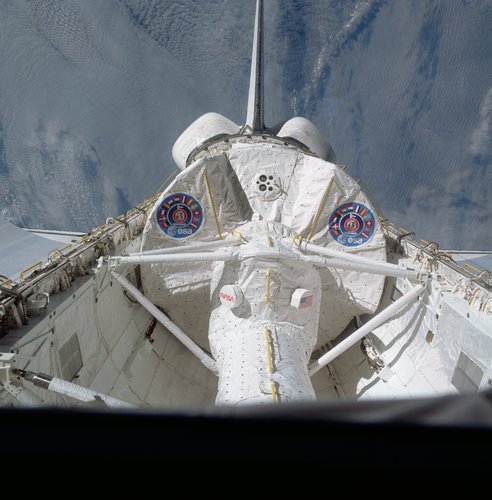
For the first time the Shuttle carried a crew of six, including German ESA astronaut Ulf Merbold, the first non-American astronaut to fly on the Space Shuttle.
In preparation for Spacelab, ESA Member States in 1978 put forward 53 astronaut candidates for one European Payload Specialist slot, and four were selected: Ulf Merbold of Germany, Wubbo Ockels of the Netherlands, Claude Nicollier of Switzerland and Franco Malerba of Italy. Ulf was selected for the first Spacelab mission, with Wubbo as backup. Wubbo flew on the Spacelab-D1 mission in 1985.
During the Spacelab-1 mission over 70 scientific experiments were conducted in a variety of fields including astronomy, solar physics, space plasma physics, Earth observation, materials science, technology and life sciences. Working in two teams of three, the crew worked 12-hour shifts, allowing for 24-hour operations – it was far from a smooth cruise in orbit.
Between 1983 and 1998, Spacelab flew on a total of 22 Space Shuttle missions. Not only have Spacelab experiments made a major contribution to space science research, but also the knowledge and expertise gained by both ESA and NASA from Spacelab flights made a significant contribution to today's International Space Station programme.
Many of Spacelab’s features live on in space hardware that is flying today. The pressure shell design was reused for the Harmony and Tranquility modules on the Space Station, and supply spacecraft, such as ESA’s Automated Transfer Vehicles and the commercial Cygnus, reuse Spacelab’s exterior structure.
Europe’s Columbus laboratory on the Station evolved from Spacelab. On the inside, Spacelab used standardised science racks that contributed to its success and were adopted for all of the Station’s laboratory modules.
In the same way that Spacelab was operated by international teams of astronauts, so are today’s European experiments and laboratories on the Station. They are kept running and performing science by the Station’s Expedition crews – which now include European astronauts.



